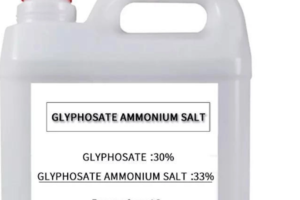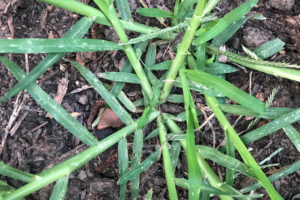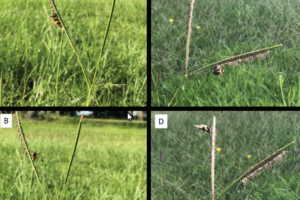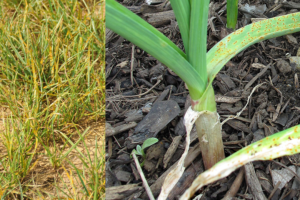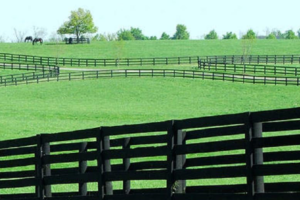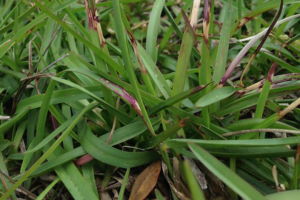
Introduction
The Global Challenge of Soil Pollution
Soil pollution is a growing concern worldwide. Imagine planting your favorite flowers or vegetables, only to discover that the soil they’re growing in is contaminated. Heavy metals, like lead (Pb), are among the top culprits. These metals can be harmful not just to plants but also to us and the environment. Centipedegrass comes to the rescue.
Why Lead (Pb) is a Big Deal
Lead is a tricky metal. While naturally found in the earth’s crust, too much in the soil can be harmful. Plants can absorb this lead, which means it can end up in our food. Plus, lead can affect the growth and health of our beloved plants. So, finding a way to reduce its levels in the soil is crucial for gardeners and landscapers.
A Green Solution: Phytoremediation
Here’s some good news: nature has its way of cleaning up. Some plants can absorb and store heavy metals from the soil, a process called phytoremediation. It’s like a natural detox for the ground. But not all plants are good at this, and that’s where research comes in. Scientists are always looking for plants that can help clean up polluted soils.
The Limitations of Current Solutions
While some plants are known to absorb heavy metals, they have their limits. Some can’t take in a lot of lead, while others might not grow fast enough to make a difference. Researchers are exploring new and improved plant use for soil cleanup.
Centipedegrass: The Unsung Hero
Introduction to Centipedegrass
Centipedegrass is more than just another type of grass; it’s a potential game-changer for gardeners and landscapers. This warm-season turfgrass stands out due to its rapid growth and ability to cover the ground quickly. Not only does it look great on a lawn, but it also has a unique talent: it can help clean up soil contaminated with lead, a harmful heavy metal.
Why Centipedegrass is Special
When we think about pollution, we often picture factories or car exhaust. But pollution in the soil, especially from heavy metals like lead, is a silent threat. This is where Centipedegrass shines. It’s been proven to tolerate high levels of lead and can even absorb and store it. This makes Centipedegrass an excellent candidate for helping to clean up polluted soils. Imagine grass that not only beautifies your lawn but also makes it safer!
The Power of Centipedegrass in Remediation
It’s one thing to tolerate pollution, but Centipedegrass goes further. Research has shown that this grass has a high tolerance to lead and can even enrich it, meaning it pulls the lead out of the soil and stores it. This is a big deal for anyone concerned about soil health. And the best part? Centipedegrass doesn’t do this alone. Combined with certain organic acids, its ability to clean up the soil improves.
The Potential for Wider Use
Given its unique properties, Centipedegrass could play a significant role in addressing soil pollution challenges. For gardeners and landscapers, this means an opportunity to use aesthetically pleasing and environmentally beneficial grass. As more people become aware of the importance of eco-friendly gardening practices, Centipedegrass could become a top choice for lawns everywhere.
The Power of Low-Molecular-Weight Organic Acids (LMWOAs)
Nature’s Little Helpers: What are LMWOAs?
Low-Molecular-Weight Organic Acids, or LMWOAs, are natural compounds mainly derived from plant root exudates. These include familiar names like citric acid, malic acid, and tartaric acid. These acids are like nature’s little helpers, playing a vital role in helping plants deal with heavy metals in the soil. Unlike some artificial agents, LMWOAs are eco-friendly, breaking down naturally and posing minimal environmental risks.
Boosting Plant Health and Soil Clean-Up
When dealing with heavy metals like lead in the soil, LMWOAs are a game-changer. They enhance the ability of plants, like Centipedegrass, to take up and store these metals, effectively cleaning up the soil. But that’s not all! When these metals stress plants, LMWOAs can also boost their health. For instance, they can improve the physiological growth of plants, helping them thrive even in challenging conditions.
LMWOAs and Centipedegrass: A Dynamic Duo
Pairing Centipedegrass with LMWOAs creates a powerful combination for tackling soil pollution. The acids enhance the grass’s natural ability to tolerate and accumulate lead. This means that not only can Centipedegrass grow in lead-contaminated soils, but with the help of LMWOAs, it can also help clean those soils more effectively. For gardeners and landscapers, this offers a promising solution for areas where soil health is a concern.
Why LMWOAs Matter for Your Lawn
Think of LMWOAs as a boost for your lawn’s health and the environment. They can help plants like Centipedegrass perform at their best, even in less-than-ideal soil conditions. Plus, by enhancing the soil-cleaning abilities of plants, LMWOAs offer a sustainable way to address soil pollution. Understanding and utilizing the power of LMWOAs can make a significant difference for those looking to combine beauty with eco-friendliness in their gardens.
The Experiment: Centipedegrass Meets LMWOAs
Setting the Stage: The Experiment’s Framework
Researchers embarked on an exciting journey to see how Centipedegrass would react when paired with LMWOAs. They started by collecting healthy Centipedegrass seedlings and setting them up in a controlled environment. This environment, known as a hydroponic system, allows plants to grow in water with essential nutrients without soil.
This makes it easier to monitor and control the conditions. The seedlings were first allowed to adapt to this new environment for about a month. Once they were comfortable and showing healthy growth, the actual experiment began.
The Conditions: Temperature, Light, and More
To ensure the results were accurate, the researchers maintained specific conditions. They kept the temperature between 26-28°C during the day and 20-22°C at night. The seedlings received light for 16 hours daily and rested in darkness for 8 hours.
The light intensity was consistent, and the surrounding humidity was between 70-75%. This setup ensured that the Centipedegrass was growing in optimal conditions, ready to face the challenges of the experiment.
Introducing LMWOAs to the Mix
With the stage set, it was time to introduce the LMWOAs. The researchers used three types: citric acid (CA), malic acid (MA), and tartaric acid (TA). These organic acids were added to the hydroponic system to see how they would influence the Centipedegrass’s ability to tolerate and absorb lead. The goal was to determine which of these acids would be the most effective in boosting the grass’s natural abilities.
Observing the Results: A Positive Impact
The results were promising! The combination of Centipedegrass and LMWOAs positively impacted the grass’s health and ability to deal with lead stress. Different LMWOAs had varying effects, but one thing was clear: introducing these organic acids made Centipedegrass even more potent in tackling lead contamination. This discovery could pave the way for more sustainable and effective solutions for gardeners and landscapers dealing with soil pollution.
Diving Deeper: Analyzing the Effects
Understanding the Role of LMWOAs in Lead Uptake
Low-Molecular-Weight Organic Acids (LMWOAs) have a fascinating relationship with plants when dealing with lead in the soil. Some studies suggest that LMWOAs can encourage plants to take up and store more lead from the soil.
On the other hand, a few researchers believe these organic acids might not significantly impact plant lead uptake due to their short lifespan and natural breakdown. It’s a topic of debate, but one thing is clear: LMWOAs can influence how plants interact with lead.
Centipedegrass and LMWOAs: A Closer Look
In this study, the researchers intensely studied how Centipedegrass responds to lead when introducing LMWOAs. They found that while the roots of Centipedegrass had reduced lead concentrations with LMWOA treatment, other parts of the plant showed a significant increase in lead accumulation. This suggests that LMWOAs might be helping the grass move the lead away from its roots and store it in other parts, potentially reducing the harmful effects of the metal.
The Complex Interplay: Soil, Lead, and LMWOAs
LMWOAs can influence the behavior of lead in the soil and its interaction with plants in various ways. These organic acids can affect the soil’s acidity, bind with lead to form complexes, and even participate in chemical reactions that change the state of lead. All these factors can influence how much lead a plant takes up. The study’s findings hint at the potential of LMWOAs to modify how Centipedegrass interacts with lead, offering new insights for gardeners and landscapers.
Implications for Gardeners and Landscapers
The research sheds light on the potential benefits of using LMWOAs in gardens and landscapes, especially in areas with lead-contaminated soil. By understanding how these organic acids work with plants like Centipedegrass, gardeners can make informed decisions to ensure healthier lawns and gardens. The study offers hope for those looking to mitigate the effects of soil pollution naturally and sustainably.
FAQ’s
What is the global concern regarding soil pollution?
Soil pollution is a growing concern worldwide, with heavy metals like lead (Pb) being among the top culprits. These metals can be harmful to plants, humans, and the environment.
How does Centipedegrass help in combating lead contamination in the soil?
Centipedegrass is a warm-season turfgrass known for its rapid growth and ability to cover the ground quickly. It can tolerate high levels of lead and has the capability to absorb and store it, making it an excellent candidate for cleaning up polluted soils.
What is phytoremediation?
Phytoremediation is a process where certain plants absorb and store heavy metals from the soil, acting as a natural detox for the ground.
How do Low-Molecular-Weight Organic Acids (LMWOAs) assist plants in dealing with heavy metals?
LMWOAs, such as citric acid, malic acid, and tartaric acid, enhance the ability of plants to take up and store heavy metals, effectively cleaning up the soil. They also boost the health of plants stressed by these metals, improving their growth even in challenging conditions.
How do LMWOAs and Centipedegrass work together in addressing soil pollution?
When paired, LMWOAs enhance Centipedegrass’s natural ability to tolerate and accumulate lead. This combination allows Centipedegrass to grow in lead-contaminated soils and, with the help of LMWOAs, clean those soils more effectively.
What was the main objective of the experiment involving Centipedegrass and LMWOAs?
Researchers aimed to observe how Centipedegrass would react when paired with LMWOAs in a controlled hydroponic system. The goal was to determine which organic acids (citric acid, malic acid, tartaric acid) would be most effective in boosting the grass’s natural abilities to tolerate and absorb lead.
What were the key findings of the experiment?
The combination of Centipedegrass and LMWOAs had a positive impact on the grass’s health and its ability to deal with lead stress. Different LMWOAs had varying effects, but overall, introducing these organic acids made Centipedegrass more potent in tackling lead contamination. Among the LMWOAs, MA was most effective in promoting lead accumulation, CA in promoting lead transport, and TA showed a balanced performance.
Conclusion:
The Positive Impact of LMWOAs on Centipedegrass Under Lead Stress
When Centipedegrass faces the challenge of lead stress, introducing Low-Molecular-Weight Organic Acids (LMWOAs) can be a game-changer. In the study, it was observed that applying CA, MA, and TA significantly reduced the harmful effects of lead on the grass. These organic acids helped in reducing damage to the plant’s cells and boosted the overall health and growth of the grass. By enhancing certain protective mechanisms in the plant, like increasing the activities of specific enzymes and enhancing the content of protective molecules, LMWOAs improved the grass’s tolerance to lead.
Understanding the Accumulation and Transport of Lead
The study also delved deep into how Centipedegrass accumulates and transports lead, especially when LMWOAs are in the mix. Interestingly, while all three LMWOAs decreased the lead concentration in the roots, they increased it in the stems and leaves.
This suggests that these organic acids help the grass move lead away from its roots, potentially reducing the metal’s harmful effects. Among the three LMWOAs, MA was most effective in promoting lead accumulation, CA excelled in promoting lead transport, and TA showcased a balanced performance in both areas.
Source Citation:
Cai, Xinyi & Fu, Jingyi & Li, Xi & Peng, Lingli & Yang, Liqi & Liang, Yahao & Jiang, Mingyan & Ma, Jun & Sun, Lingxia & Guo, Baimeng & yu, Xiaofang. (2022). Low-molecular-weight organic acid-mediated tolerance and Pb accumulation in centipedegrass under Pb stress. Ecotoxicology and Environmental Safety. 241. 113755. 10.1016/j.ecoenv.2022.113755.

Bob Green, a passionate lawn care enthusiast with over two decades of landscaping experience, is this website’s proud owner. His vast knowledge of horticulture and dedication to helping homeowners maintain beautiful lawns are reflected in the valuable content he shares on his platform. John has always been interested in Agrostology.









